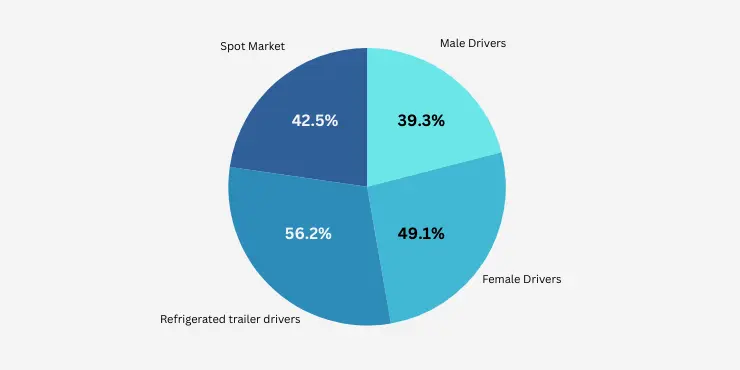The detention of truck drivers at customer facilities continues to be a huge burden on the trucking industry. In 2023 alone, the cost of this downtime skyrocketed to an astounding 135 million hours. Beyond the financial impact, there’s a hidden safety risk at play, as detained drivers are often forced to drive at faster speeds to make up for lost time. Unfortunately, many professionals in the trucking world have come to accept this as just another part of the job.
The American Transportation Research Institute (ATRI) has shed light on this issue with its new report, which dives deep into the consequences of driver detention at customer facilities. The research paints a clear picture of the damage done to fleet productivity, driver efficiency, and the overall supply chain. Not only does detention result in wasted time, but it also makes truckers drive faster both before and after these delays, adding to safety concerns. The impact is felt across the board—by fleets, truck drivers, and the entire logistics industry.

Although the number of detention hours has decreased slightly in the last few years, the associated costs are still overwhelming. According to the ATRI report, truckers spent more than two hours detained in 39.3% of all stops in 2023. The situation is even worse for women drivers, who experienced detention at 49.1% of stops, and refrigerated trailer drivers, who faced it at 56.2%. Fleets that operate in the spot market also faced higher detention rates, with 42.5% of stops resulting in delays.
ATRI’s research gives us a detailed look at just how much time truck drivers lose to detention each year. Depending on the sector, truckers can spend anywhere from 117 to 209 hours per year sitting idle at customer facilities. In the for-hire trucking sector alone, this adds up to over 135 million hours lost annually. These numbers make it clear that detention is more than a minor inconvenience—it’s a significant drain on the trucking industry’s resources.
Most fleets (94.5%) attempt to mitigate the costs of detention by charging fees. However, less than half of those invoices are ever paid. As a result, the industry faces a double hit. Not only are fleets losing $3.6 billion in direct expenses due to detention, but they’re also dealing with an $11.5 billion loss in productivity. This means the issue is not just about lost time but also about inefficiencies throughout the supply chain and beyond.
One of the most troubling aspects of driver detention is its ripple effect on truckers themselves. The longer drivers are detained, the less they earn and the more frustrated they become, leading to higher turnover rates. ATRI’s analysis shows that detention is not only affecting how efficiently goods are delivered but also how long drivers stick around. Driver pay takes a direct hit, and companies lose valuable employees, contributing to the industry’s ongoing labor shortage.

Using GPS data from large trucks, ATRI also uncovered a worrying trend. Trucks that experience detention tend to drive faster after being delayed, with speeds increasing by an average of 14.6%. What’s more, drivers appear to anticipate detention and speed up on their way to facilities where they know they’ll be held up. This behavior increases the risk of accidents and highlights the lengths to which drivers are pushed when trying to make up for lost time.
“Detention has become so common that many in the industry now see it as inevitable,” said Chad England, CEO of C.R. England. This mindset has allowed the problem to persist, with many professionals unaware of the full scope of its effects. ATRI’s report, however, has laid out the numbers clearly, showing just how much detention costs both the trucking industry and the broader economy.
Driver detention isn’t just an inconvenience—it’s a costly issue that affects productivity, driver safety, and the entire logistics supply chain. With ATRI’s latest report highlighting the massive financial and operational toll detention has on the trucking industry, it’s clear that changes need to be made. Both fleet owners and customers must work together to reduce these delays, not only to save money but also to improve overall safety and efficiency in the industry.